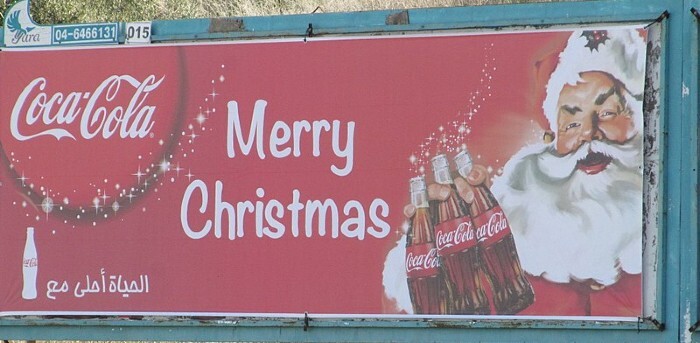15 Cultural Phenomena That Were Just Marketing Ploys

In the modern world, marketing pervades just about every aspect of our lives, from what we eat to how we spend our free time to who we rub our genitals on. Even some of the most basic facts of life and institutions we hold most sacred can be traced back to some guy who wanted to sell us something.
Coffee Breaks

The coffee break was technically invented by defense plants during World War II because if their workers didn’t stay alert, planes fell apart and stuff. What other industries’ workers were doing during their breaks is anyone’s guess (definitely masturbating), but it didn’t become widespread and wasn’t even called a “coffee break” until it reached the ears of the Pan American Coffee Bureau in 1952, when their launched their “Give Yourself a Coffee-Break” campaign to take advantage of the opportunity to sell more coffee. By the end of the year, 80% of employers polled had instituted coffee breaks.
The American Breakfast

Picture a classic American breakfast: a smorgasbord of eggs, meat, at least one kind of fried potatoes, and cake for some reason. This was totally unrecognizable as breakfast to Americans before the 1920s, who largely just ate a slice of toast and a cup of coffee in the morning, until Edward Bernays, a PR maverick who happened to be Sigmund Freud’s nephew, was tasked by a client to sell more bacon. He went around to a bunch of doctors, needled them with questions like “People should eat more for breakfast, right? Riiiiight?” and published the results, and that’s why the staff at Denny’s has to wash so many plates.
Bacon
Remember back in the 2000s, when everything from chewing gum to lube came in bacon? It was a confusing and chaotic time, and it was all because the health craze of the ‘80s plummeted pork sales, so executives crafted a backlash as a way to, again, sell more bacon. You’d think salty fat wouldn’t be so hard to sell, but here we are.
Orange Juice

In the 19th century, citrus fruits were so expensive to produce and transport that most people couldn’t afford them, let alone throw most of it away and only drink the juice. Then the U.S. yoinked California and started planting the shit out of some orange trees, realizing too late that they had way too many orange trees, so citrus titan Sunkist started pushing orange juice as the breakfast beverage of champions and all but pleading consumers to help them get rid of some of these oranges.
Diamond Engagement Rings

These days, asking someone to marry you without the presentation of a little velvet box is a good way to get a “no, you cheapass,” but few people exchanged engagement rings at all before the 1930s, and even fewer of those rings contained diamonds. That was around the time the De Beers company came into a massive glut of diamonds and, to avoid crashing prices, convinced the public via a massive marketing campaign that you didn’t really love someone unless you put the product of horrific mining practices on their finger.
Wedding Registries
By the 1920s, the ancient practice of showering newlyweds with weird symbolic gifts had mostly died out, and only their closest friends and family were expected to do anything more than party their faces off. That didn’t suit department store Marshall Fields, who invented the wedding registry in 1924 to sell more merchandise under the guise of providing the couple with everything they need to start their new life (except any kind of useful sex education).
Shaving

The idea that hair is only desirable on some parts of a woman’s body and not others can be traced back to about 1915, before which not much of their non-face parts were even seen in public, so no one cared. Then, the skimpier fashions of the flapper era gave Gillette the idea to convince women that armpit and leg hair is gross, actually, and they just so happened to have the product to fix it.
Father’s Day

By the time Father’s Day became a national holiday in 1972, Sonora Smart Dodd had been campaigning for it for some time, because why should moms get all the fun? She didn’t succeed, however, until she appealed to the Associated Men’s Wear Retailers, who established a whole council to promote the holiday. That’s right: Father’s Day was established to sell ties.
The Miss America Pageant
Believe it or not, New Jersey hasn’t always been an enthusiastic supporter of young women’s excellence. The Miss America pageant began in 1921 as a swimsuit competition to lure tourists back to Atlantic City once summer was over in the time-honored marketing tradition of “boobs.”
Herpes Stigma
Most people have some type of herpes virus, so before the ‘80s, no one really cared if it was on your face or your junk. Arguably, the former is worse because everyone can see it, but it was so normalized that even that didn’t matter until the creators of a herpes medication called Zovirax started telling the public there was a difference between “cold sores” (fine and normal) and genital herpes (a dreadful pox that should confine you to a colony of some sort) because no one would buy their stuff otherwise.
The Olympic Torch

The Olympic flame has always been a part of the festivities, but the idea of carrying it from Greece to the site of the games was invented by Nazi Germany for the 1936 Berlin games. The thinking behind it was pretty nebulous, but basically, they wanted to attract tourists, convince them that Nazi Germany was cool, and generally normalize torch-wielding Nazis.
Ten Commandments Monuments
People are pretty protective over the monuments to the Ten Commandments that appear on government property across the country considering they didn’t exist until Cecil B. DeMille needed to promote a movie. The Fraternal Order of Eagles had wanted to put them up for some time, but they couldn’t raise the funds until they teamed up with the director, who paid for hundreds of monuments modeled after the tablets in his 1956 movie. He even sent Charlton Heston out to the unveiling ceremonies.
Spoilers

(Paramount Pictures)
Nobody really cared about “spoiling” the plot of a movie or book until the 1960 release of Psycho, when Alfred Hitchcock went around buying every copy of the novel the movie was based on that he could find and promotional materials encouraged audiences not to tell their friends what happens. Hitchcock may have truly believed going in blind was the best way to experience the movie, but the mystery he created sure helped to sell a lot of tickets.
Christmas Lights

People used to light their dry-ass Christmas trees with actual candles, which was obviously super dangerous, but they weren’t gonna just not risk a fiery death when holiday cheer was on the line. The first electric Christmas lights were strung up by Thomas Edison around his New Jersey laboratory in 1880 to show people how cool electricity was. Two years later, one of his workers put the lights on an actual tree in a window on the busy Manhattan street where he lived, and that’s why you have to wrestle with a tangled mess once a year: because the miracle of electricity wasn’t exciting enough without involving Santa.
Santa Claus

Of course, Santa as we know him wasn't popularized until 1931, when Coca-Cola unveiled its latest holiday campaign featuring the red-coated, red-nosed, “huh, suspiciously red-focused” Santa of the modern era, inspired by the description in “‘Twas the Night Before Christmas.” Before then, Santa was depicted as everything from a tiny elf to the actual bishop named Saint Nicholas. You might instead like to celebrate Santa as a Viking god with blue or brown robes who rides an eight-legged horse and doles out vigilante justice, which is both more authentic and infinitely more metal.
Top image: Ceyda Çiftci/Unsplash